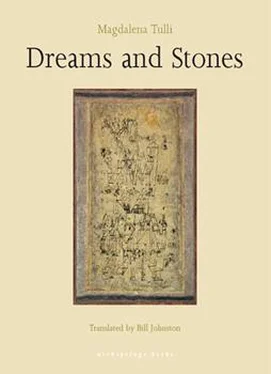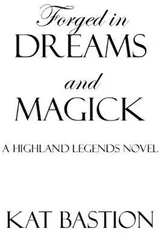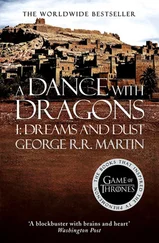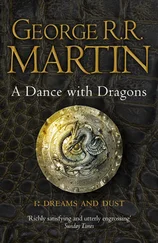In the dense crown of the tree it is impossible to see where one branch ends and the next begins; there are so many of them intertwined and jumbled together, including those cut off long ago, leaving only knots. For nothing in the world can be cut off completely and finally. The work of the pruning shears brings the proper semblance of order but no improvement can be discerned. The farther away from the trunk one looks the smaller and thinner the branches are; the smaller and thinner they are the more there are of them. The most numerous are next year’s branches, so tiny and thin that they are not even visible. The unbridled confusion of the tree prevents one from understanding the purposefulness of the machinery’s movement. Yet understanding the movement of the machinery turns the tree into a crude construction of wood and bast, a banal arrangement of water circulation.
Everyone knows that tree and machine are only words; whoever utters them stops the motion of the world for a moment in their head. Thus, along with irritation at this willfulness, in places there arises a temptation to set in order the movement of the world in the heads of those who oversimplify it or render it excessively complicated. But the removed imaginations leave behind scars and hatred. Even if one were to imprison all those who think the world is like a tree, or their adversaries who maintain that it is like a machine; even if they were all to be shot and buried in mass graves, the prisoners, and especially the dead, would be confirmed in their convictions and would become more stubborn and less willing to compromise than ever before. For nothing in the world — even imaginations — can be destroyed completely and finally.
Since nothing can be annulled or removed, in the spaces of the name there still exists the city of excavations peopled by men in rubber boots and women wearing headscarves, the place where this story had its beginning. No change has occurred there, no new house has been finished nor have any more burned-out ruins been pulled down. The vast bomb crater in whose roar everything began has not been filled in. It remains as a trace of the sudden flare that at a certain moment bathed the tenants of the apartment buildings, the owners of glass-fronted cabinets containing china, of escritoires and ottomans. They were bathed in it and then they burned along with their furniture or else they were swallowed up by the earth, lying outstretched, their arms crossed over their chest. So the crater is still there, deep as the caldera of a volcano, and in it a stinking bloody gurgling persists — a welter of dirty bandages, baby carriages, single shoes, crushed hats, rusty scrap metal, trampled eyeglasses. While above it, like volcanic ash, hover feathers from ripped-open pillows.
The people in the rubber boots looked alike, as if they were cast from the same mold. They had arms and legs; they had noses, ears and eyes. It seemed that when they stood in their ranks they must have seen the same things. Yet they barely looked at those things. They each looked in their own direction at memories they preferred to keep to themselves, at scenes that always took place in the foreground against a chance backdrop of scaffolding. They were the children of characters sitting in curved chairs in a photographer’s studio or standing in front of sepia-colored trees in all kinds of outfits and headgear: round cloth caps with oilskin peaks, pomponned kepis and pill-box hats and even bowlers and panamas. Along with a physical description the heirs to these images also inherited — like a promissory notice to be paid off — the impermanence of form. Transformed from children into adults and themselves at the mercy of others’ recollections, in their own memories they preserved nonexistent addresses and interiors and carried palaces, squares and streets with which they were unable to part. At hand they kept only what was most necessary: watch, suitcase, pocketknife, Primus stove, scarf, pictures of ladies in hats and veils.
One of the most important differences between the city of excavations and the city of memories was that the majority of characters from the photographs were gone. Their eyes — grayish or brownish, staring rather naively from behind their veils at some spring afternoon or perhaps a summer morning that no one remembers anymore — could see neither the excavations nor the people in rubber boots who carried their singed pictures with them. It was not known what had happened to the love that lent a warm tinge to their sepia-colored gaze: whether it had crumbled to dust amid the flames like a china teacup or whether it had blown away with the smoke into the sky.
Gazes, interiors and objects were gradually erased from memories to the extent that observers grew accustomed to new images. Certain things, soot-blackened but undamaged, were taken directly from the ruins. The observers of the changes were convinced that they knew where they came from. In their view they were from the city of furnishings where they had once been seen. They assumed that the things had somehow found their way out of the aforementioned crater, perhaps expelled by it along with the rubble and the ashlike lava. Yet if this is true, in such a manner barely one typewriter in a thousand, only one china teacup out of fifty thousand, made it from the city of furnishings to the city of excavations. Where were the other thousands of typewriters and china teacups? The fact was that they were no longer anywhere: neither on the earth nor below the earth nor in the air.
At this point the obvious truth should be mentioned: The inhabitants of the city of excavations were also not from here. They too crawled out from the crater, filthy, smoke-blackened, in rags. There was no return to the place they had come from. They were born in the immediate or distant vicinity of the mass of tapering W s and A s, in regions through which there passes a dark and turbid stream bearing the image of those same letters, recognizable yet indistinct, like steep roofs or pencil-thin steeples. In the city of excavations different W s and A s gazed at their reflection in the river; they were somewhat similar to the others, but more like steeples with their tops snapped off, burned-out roofs, lone apartment buildings surrounded by piles of rubble.
But since nothing in the world can be completely and finally destroyed it is clear that the letters written on the water still exist somewhere and will continue to do so forever along with the city abounding in fragile teacups and flammable furniture, the city of the grotesque, safe, entirely free of disasters and unsusceptible to pathos. Whoever recalls its misfortunes has to laugh: Its sorrow has a false bottom in which merriment is concealed. A lot of space there is occupied by New York, with paper shares swirling in the air like petals, populated by financiers jumping out of the windows of skyscrapers, and New Orleans where black men in white tuxedos play golden saxophones at all hours of the day and night, and London where there are crowds of bankers in bowler hats, urbane criminals, detectives in checkered cycling caps and police inspectors from Scotland Yard moving their lips silently to the rhythm of rag-time music played on out-of-tune upright pianos thrust into the corner under the screen. For in this city there is a movie theater on every street and a piano in every theater. That is why it is swarming with portly industrialists with a monocle in one eye hunting for a wife and trying to marry off their daughters. Bands play tangos for them; tuxedoed waiters bustle around them and the doormen bow low. Here there is everything needed in life: horse races, air shows, military parades and roulette. While in the background fashionable men with small mustaches take the air, a schoolgirl in eyeglasses wanders by and a child newspaper vendor with a cigarette in his mouth hawks his wares.
Читать дальше












